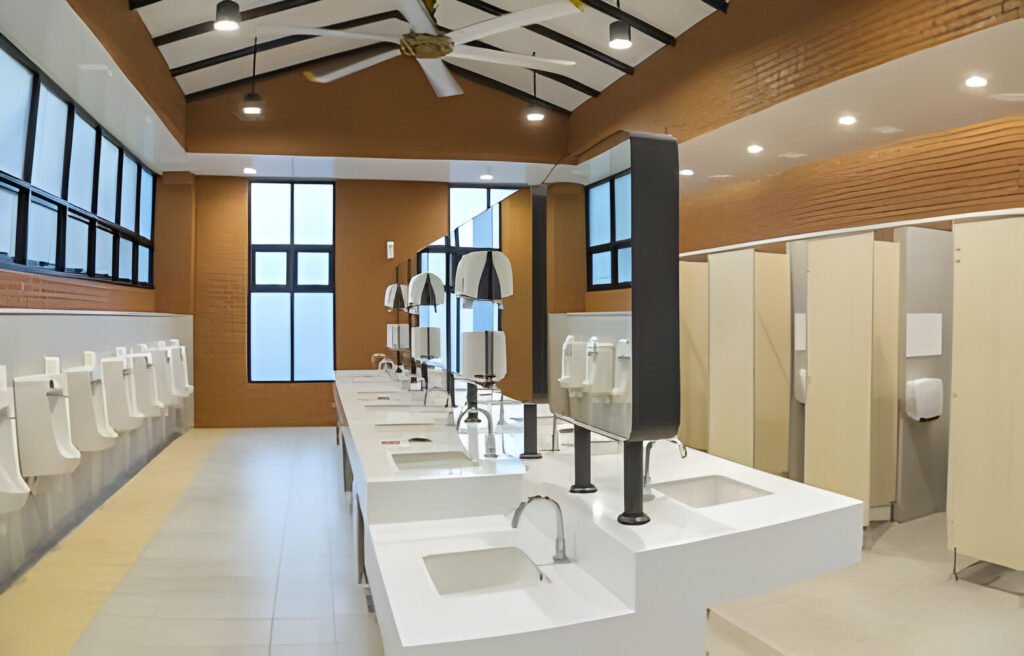Do you ever find yourself hesitating to use the toilet in a public restroom, wondering about the germs that may be lurking on the seat? You’re not alone. Many of us share the same concern, and some even go to great lengths to avoid touching the seat altogether.
In an attempt to get rid of these fears, toilet seat covers have become a common sight in public restrooms. But do they really make a difference? Are they necessary? And how to use toilet seat covers in real life? Let’s take a closer look at the effectiveness of toilet seat covers and the debate surrounding their use.
How to Use Toilet Seat Covers & their Function?
Let’s first understand why toilet seat covers are essential. The purpose of a toilet seat cover is to provide a barrier between the user and the toilet seat. When we use a public restroom, we’re exposed to a variety of germs and bacteria that can be present on the toilet seat. The cover helps to minimise this exposure by creating a physical barrier.
Aside from the obvious hygiene benefits, there are other reasons to consider using a toilet seat cover.
- It can provide peace of mind for those who are concerned about germs and bacteria. These can help you feel more comfortable using a public restroom.
- Reduces the risk of contracting infections like E. coli or MRSA that spread through contact with contaminated surfaces.
- Using a toilet seat cover is a simple and easy way to practise good hygiene.
If you don’t know how to use public toilet seat covers, here is a step-by-step guide for you:
- Begin by taking out a seat cover from the dispenser and unfolding it completely.
- Next, tear off any tabs or perforated edges and ensure that the cover is centred on the toilet seat.
- Press down on the cover to ensure it adheres to the seat and use the toilet as usual.
- Remember to dispose of the cover properly after use, and wash your hands thoroughly.
How Effective are Toilet Seat Covers?
Since we have already discussed how to use public toilet seat covers, let’s talk about the effectiveness of these. We must inform you it’s a topic of debate!
- One study, published in the Journal of Hospital Infection, found that toilet seat covers do not significantly reduce the amount of bacteria present on a toilet seat. In fact, the study found that the use of toilet seat covers may actually increase the amount of bacteria on the seat due to the increased surface area and moisture.
- However, another study, published in the American Journal of Infection Control, found that toilet seat covers do provide a barrier between the user and the toilet seat, reducing the transmission of germs and bacteria.
Experts have varying opinions on the effectiveness of toilet seat covers. Some argue that they are a useful precautionary measure, while others claim that they are unnecessary. Government health centres recommend the use of toilet seat covers as a precaution against the spread of germs, but also note that the risk of transmission from a toilet seat is very low.
Dr. William Schaffner, an infectious disease specialist at Vanderbilt University, believes that toilet seat covers provide a psychological benefit rather than a medical one. He argues that the risk of infection from a toilet seat is extremely low and that simply washing your hands after using the restroom is sufficient.
What if there are No Toilet Seat Covers?
If toilet seat covers are uncommon in your public restrooms, there are other measures you can take to ensure bathroom hygiene. These can help maintain cleanliness in public restrooms, as well as you can adopt public toilet etiquettes to ensure your and others cleanliness.
Measures to Ensure Bathroom Hygiene
- Automatic Flush Toilets: One of the simplest measures the government can take is to use an automatic flush toilet. These toilets are equipped with sensors that detect when you’re finished using the toilet and flush the bowl automatically. This means you don’t have to touch any buttons or levers, which can harbour germs and bacteria.
- Hand Dryers: Another measure one can take is to use hand dryers instead of paper towels. Hand dryers are more environmentally friendly and eliminate the need for touching potentially contaminated surfaces.
- Regular Cleaning: Public restrooms should be regularly cleaned to prevent the spread of germs and bacteria. Restrooms that are not cleaned regularly can have germs and bacteria that can cause illness.
Personal Hygiene Practices to Maintain Cleanliness
- Hand Washing: It’s important to wash your hands thoroughly with soap and water for at least 20 seconds after using the restroom.
- Use of Hand Sanitizer: If soap and water are not available, you can use a hand sanitizer that contains at least 60% alcohol. Hand sanitizers can kill most types of germs and bacteria.
- Avoid Touching Your Face: Germs and bacteria can enter your body through your eyes, nose, and mouth. To avoid this, it’s important to avoid touching your face, especially after using the restroom.
In conclusion, the debate over the necessity of toilet seat covers for public restrooms continues. While some argue that they provide a layer of protection against germs and bacteria, others claim that they are unnecessary and may even pose health and environmental risks. Ultimately, the decision to use toilet seat covers is a personal one. However, it is important to keep in mind that there are alternative measures and personal hygiene practices that can also help maintain cleanliness and prevent the spread of germs. So, consider all the facts and make an informed decision on why and how to use toilet seat covers.






